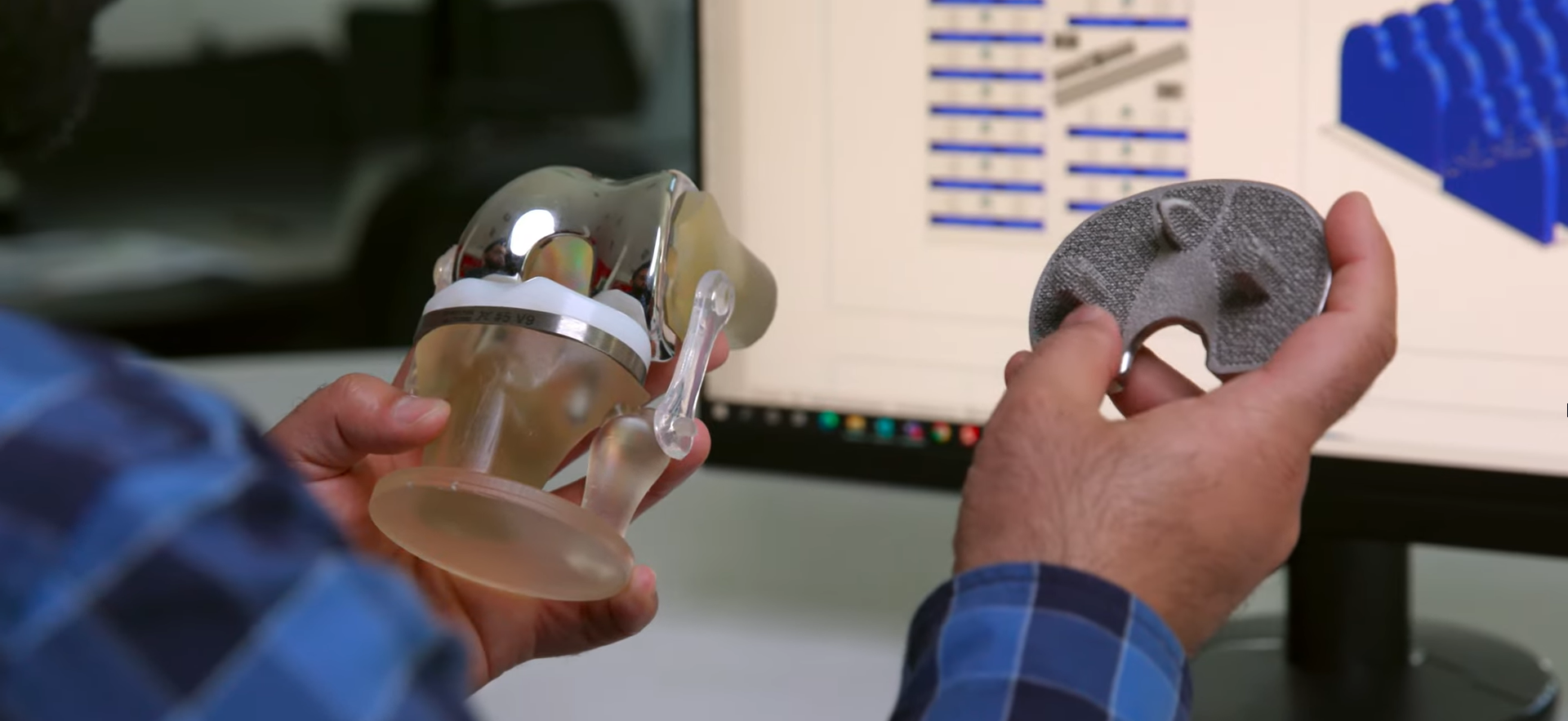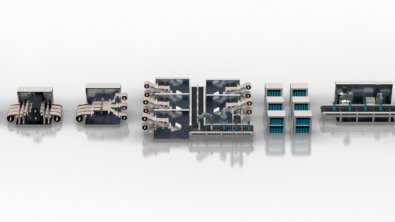Medical innovation with additive manufacturing

The medical device industry has been an early adopter of additive manufacturing technologies. Their early start has helped advance 3D printing from its rapid prototyping beginnings to full production of revolutionary orthopedic implants. LimaCorporate is a pioneer for their work in printing metal implants for their patients. Introducing an acetabular hip cup with some of the highest efficacy rates in the industry helped LimaCorporate advance 3D printing from its rapid prototyping beginnings to full production of revolutionary orthopedic implants. Today, the company is taking additive manufacturing one step further, leveraging a unified AM workflow to create a revolutionary “cementless” knee implant. Learn their full story first-hand in their video interview.
Technology innovations
LimaCorporate’s major innovation in the realm of osteo-implants is a custom lattice structure – Trabecular Titanium – which is used to improve osteointegration, or the ingrowth of bone to the implant. Traditional implants require cement to adhere implants to bone, but these types of surgeries are strongest on day one and wear down with time. LimaCorporate’s cementless alternative only grows stronger with time, by mimicking the natural bone structure in the body. The custom lattice has already been tested extensively with their first product – a hip cup – but now it is being implemented in the much more complex knee implants. Getting to this point required a whole new process to optimize for the far greater number of variables in design and to make getting to market a much faster exercise.
Optimization innovations
The complexity of motion and forces acting on a knee implant was far too great for LimaCorporate engineers to find a solution on their own. That’s why the company partnered with the Hospital for Special Surgery (HSS), the number-one hospital in the United States for orthopedic implants. By integrating the 3D geometry and parameterizing many of the variables of the implants, LimaCorporate and HSS were able to simulate a massive number of variations to the device. The posts that anchor the implant to the tibia could be moved and scaled in space to optimize torsional stresses, based on movement studies conducted previously on knees with the Hospital for Special Surgery, minimizing the impact on the patient’s anatomy. These optimizations are critical in making knee implants that can hold up to active lives of patients so they can continue to enjoy their favorite activities.
Development innovations
On top of creating a lattice-based knee replacement that promotes better osteointegration and improve the lives of implant patients, LimaCorporate has adopted improved development practices to bring these implants to market faster. By integrating their workflows into one software environment, the team greatly reduced the time it takes to model, analyze, and print implants for their patients. One advancement that has proven particularly valuable is the ability to automatically check for print viability and organize parts in the printing bed for an optimal number of implants per print.
These innovations only scratch the surface of what LimaCorporate is doing with additive manufacturing to reshape the world of medical technology. The interviews from the video embedded below provide a great overview of what the team is up to and what they have accomplished so far, but the written customer success story provides even more detail on their story. If you are interested in more applications of AM in the medical field, you should check out Unlimited Tomorrow – a prosthetic limb manufacturer working to provide prosthetic limbs to patients faster and at a lower cost than previously possible.
Siemens Digital Industries Software is driving transformation to enable a digital enterprise where engineering, manufacturing and electronics design meet tomorrow. Xcelerator, the comprehensive and integrated portfolio of software and services from Siemens Digital Industries Software, helps companies of all sizes create and leverage a comprehensive digital twin that provides organizations with new insights, opportunities and levels of automation to drive innovation.
For more information on Siemens Digital Industries Software products and services, visit siemens.com/software or follow us on LinkedIn, Twitter, Facebook and Instagram.
Siemens Digital Industries Software – Where today meets tomorrow


